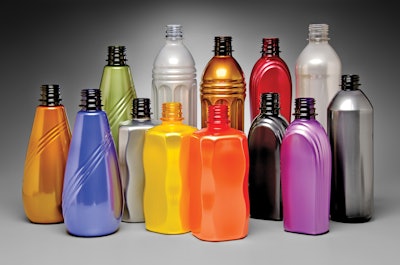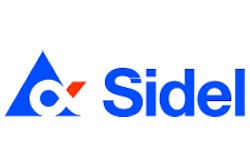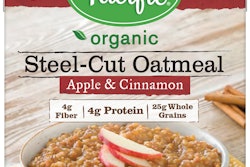
Since making its debut seven years ago, The Packaging Conference has provided a forum for new packaging materials and technology announcements as well as discussion on the market drivers of these innovations. This year’s edition, held Feb. 2-4 at The Ritz-Carlton in Atlanta, was no exception. While produced by Plastic Technologies, Inc.—a developer of rigid PET packaging—along with polyester packaging consultancy SBA-CCI, Inc., the event hosted presentations on other materials, including flexible film, glass, and metal.
During the three-day conference attended by approximately 240 industry members, a number of presenters touched on those trends driving material innovation and technology advances. Some are not so new: the need for package differentiation, cost savings, and sustainability. Others, like the rise of e-commerce and consumers’ growing interest in healthy eating, are presenting new challenges and new opportunities.
Posited Lee Nicholson, Research Fellow – Beverage Packaging for PepsiCo, in his presentation, “Lights, Camera, Action! Packaging in the digital age,” “The store is changing [with online delivery], the model is changing. How will packaging play in this space?”
Material innovation: Plastic
If variety is the spice of life, than consumers are looking for spicier fare when it comes to selecting products and packaging. And materials suppliers in virtually every market are innovating to bring more visually exciting and unique packages to market.
In his presentation, “The development and advantages of foam bottle technology – A case study in innovation development,” Scott Steele, President of PTI talked about the company’s new oPTI® lightweight PET containers, available in monolayer or overmolded options, that are said to offer “spectacular visual appeal.”
“PET is a great packaging material,” said Steele. “It’s low cost, it’s transparent, and it has high toughness and gloss, and that’s why so many popular beverages have been packaged in it. But one of the missing elements of PET—at least compared to high-density polyethylene packaging—is the plethora of colors that are offered in HDPE packaging to help brands differentiate their products and sell product based on how the consumer reacts to it at that First Moment of Truth, second Moment of Truth, and Third Moment of Truth.”
With the monolayer option, PTI’s foam bottle technology enables the blow molding of white or silver-colored bottles, without the use of additives that can limit package recycling. The overmolded option allows for the addition of metallized or pearlescent colorants. The process also gives the bottle a unique, tactile surface feel and allows decorations, such as embossed logos, to stand out better. In addition, the foamed PET bottles are lighter in weight by approximately 5% and provide up to a 95% reduction in transmitted light.
As Steele explained, to produce the foamed bottle, liquid nitrogen is injected into the preform, while modified injection-molding platforms are used to control time, temperature, and pressure to achieve the required density. The resulting preform is blow-molded in the same way as traditional PET bottles.
“This is a way to make PET highly attractive, and it also has some environmental benefits that give it a slight edge over what you get from other ways to color PET,” said Steele.
In late January, PTI was named the exclusive agent in Europe for the sales and licensing of Toyo Seikan’s Fi-Cell™, a monolayer foam PET bottle technology that is run on a standard injection-molding press. Fi-Cell has one commercial end user so far, a Japanese coffee drink. PTI’s oPTI has not yet been used in a commercial application.
Advances in aluminum cans
In the area of metal cans, Eric Anderson and Jessica Sanderson, Director – Business Development Sustainability, and Director – Sustainability for Novelis (www.novelis.com), respectively, presented “From Supplier to Consumer, closing the recycling loop,” which discussed the company’s goal to significantly increase its use of recycled aluminum and its introduction of the evercan™ can body sheet (CBS).
As Anderson and Sanderson explained, Novelis is the world’s largest aluminum roller as well as its largest aluminum recycler. The company’s goal is to increase its use of recycled aluminum from 33% to 80% by 2020, an improvement expected to remove 10 million metric tons of greenhouse gases from its aluminum product value chain annually.
“If you have one impact that in and of itself outweighs all the other environmental impacts, it’s pretty obvious that you need to tackle that,” said Sanderson. “The no-brainer for us at Novelis is recycling. Recycling has a dramatic impact on our carbon footprint.”
The company’s strategy to increase its use of recycled aluminum includes increasing its recycling capacity, expanding its scrap purchasing, reshaping its product portfolio, evolving design specifications, and increasing the use of post-consumer content.
In moving toward these aggressive goals, Novelis uncovered an opportunity within the industry, Anderson explained. “As we continued to segregate certain alloys of aluminum, especially UBC, or used beverage cans, it created a business opportunity for us. And that is a product called evercan.”
The evercan is the first and only independently certified high recycled-content CBS, made from 90% recycled aluminum—a dramatic difference versus the estimated 45% to 55% used globally, and the mid- to high 60%-content range in the U.S. The CBS has been certified by SCSGlobal Services (www.scsglobalservices.com) across Novelis’ global organization.
“Our challenge moving forward is the can end,” added Anderson. “It needs to be a stronger piece of aluminum, and it often needs to be thicker. That is a much more challenging opportunity for us.” A finished, 12-oz evercan comprises 70% recycled content, guaranteed, he added.
New form/fill technology
Ten years in development, LiquiForm™ technology—which removes the “blowing” from blow molding and integrates forming and filling in one step—is “on the precipice of commercialization.” That was the message from LiquiForm President Ann O’Hara, who, along with her colleagues, Tod Eberle, Amcor Rigid Plastics Vice President, and Luc Desoutter, Sustainability Officer for Sidel, spoke on “LiquiForm™ The next big thing in container making.”
In July 2014, Amcor announced a joint partnership with Sidel to develop LiquiForm, a technology that Eberle said was inspired by Sidel’s Combi integrated blowing-filling-capping system. “We asked ourselves, is there an opportunity to go further and combine stretch blow molding and filling in one technology that is compatible with PET and other materials?” he said.
The resulting technology engineered by the partners—advertised as “a step change in efficiency and flexibility”—uses pressurized liquid instead of compressed air to form plastic containers, resulting in a significant decrease in energy costs. For standard blow molding, the air compression cycle is only 35% to 40% efficient and consumes approximately 70% of the total amount of electricity used in the blow-molding process. LiquiForm uses much less electricity to hydraulically drive incompressible fluid into the container while it’s forming at a much higher efficiency.
Among the other benefits of the technology cited during the presentation were:
• Reduced maintenance and labor costs versus operating two separate machines
• An optimized supply chain
• Lower capital costs and a smaller machine footprint
• Potentially sharper bottle definition
• Reduced waste with enhanced technology
• Greater filling accuracy
• Lower GHGs
• Reduced transportation costs
• The elimination of package damage associated with empty bottle transport
• A greater design window for polypropylene and HDPE applications
As O’Hara explained, Amcor and Sidel have recognized that the best way to bring the technology to market is by licensing it to equipment manufacturers. “Licensing is a good way to go, as there are so many different applications that are going to have to be worked through,” she said. Videos shared at the conference (see pwgo.to/1437) offered a glimpse of some of the potential applications, including condiments, beverages, and personal care products—“although we may not get to high-viscosity products immediately,” O’Hara remarked.
Per Amcor/Sidel’s timeline, the predicted path forward for LiquiForm is to have the first commercial production application by 2018, with broader adoption and continuous development in three-plus years. Said O’Hara, “The things we think are constraints today are things that we just haven’t figured out yet.”
Health and variety drive beverage consumption
While news of industry trends was woven throughout many of TPC’s 20-plus presentations, several dealt directly with emerging issues. One trend—consumers’ growing desire for healthier options and more variety—is having a notable impact on the beverage market, as Gary Hemphill, Managing Director of Beverage Marketing Corp. outlined in his presentation, “Beverages 2015: What’s in store?”
Overall, he explained, after a flat performance in 2013, the liquid beverage refreshment (LBR) market rebounded with modest growth—approximately 1%—in 2014, due in part to the growth in the economy. Category winners by volume share included bottled water, niche categories, and alcoholic beverages. Among the losers: carbonated soft drinks, milk, fruit beverages, and value-added water.
In general, he noted, traditional mass-market categories have struggled, while niche categories have experienced growth: 8% for RTD coffee, 6.8% for energy drinks, 2.6% for RTD tea, and 3.5% for sports drinks. Bottled water is the primary exception of a mainstream category that is thriving. Over the last three years, bottled water has increased its share of stomach by more than three points, capturing the number-two position after CSDs.
“Why has CSD been declining? The primary reason we think is people don’t view them as healthy refreshment,” Hemphill explained. “People want to feel good about themselves. They want to be eating and drinking things that are better for you.
“The other issue is variety. It is the biggest category, and people want variety. They don’t want to be drinking the exact same product throughout the day, so there’s some switching involved.”
One reason, beyond its health attributes, that bottled water is growing: the low price per bottle, from $2.49 to $2.99 for a 24-pack of PET bottles. The price, Hemphill says, is aided by advances in supply chain costs, including high-speed bottle filling in the range of 15 million to 18 million cases/yr/line, stable to declining resin costs, and continued bottle lightweighting.
When it comes to packaging formats, the growth of niche beverages has resulted in the proliferation of packaging alternatives. These include new multipack configurations; an increase in PET and glass sizes and shapes; cans; aseptic packages; paper packages in half-gal and quart sizes; and shot formats.
“Cans, plastic, and glass now make up more than 90 percent of the beverage packaging universe,” said Hemphill. “Over the last five years, plastic has seen the most growth [from 34.3% in 2008 to 39.1% in 2013] due mostly to the success of the bottled water category.”
Digital: threat or opportunity?
In their session on the growth of e-commerce in the consumer market, Peter Borowski, Head of Design for Kraft Foods Group, along with a panel comprising Martin Short and Robert Croft, partners at design firm Swerve, explored new ways that packaging might evolve in response to online shopping. “With e-commerce, the role of packaging changes from retail to online,” said Short. “It becomes more functional. But that’s looking at it in a very simplistic way. Online, we can get rid of those things that get in the way of grabbing consumers’ attention. Online, we can tell a story and provide a more informed process. We can introduce new products, packs, and systems that might not get the same attention at retail.
“Packaging still has two roles: functional and emotional. Online you can look at multiple different aspects of a product and packaging.”
Questioned Borowski, “How will we interact with packaging online? Color and structure play a big role in packaging. How will that work in a 2D world? Will there be a tactile way of experiencing packaging in the future, such as 3D or virtual stores, or BitGloves?”
When it comes to the physical packaging associated with e-commerce, Croft noted that online sales are not very advanced right now. “Online is becoming akin to bulk sales,” he said. “It’s downplaying the experience. It’s sort of like catalog shopping. We are falling into the habit of sticking it in a large cardboard box. Packaging is being driven by distributors rather than brands. We are washing the product and brand promise out of the equation.


























